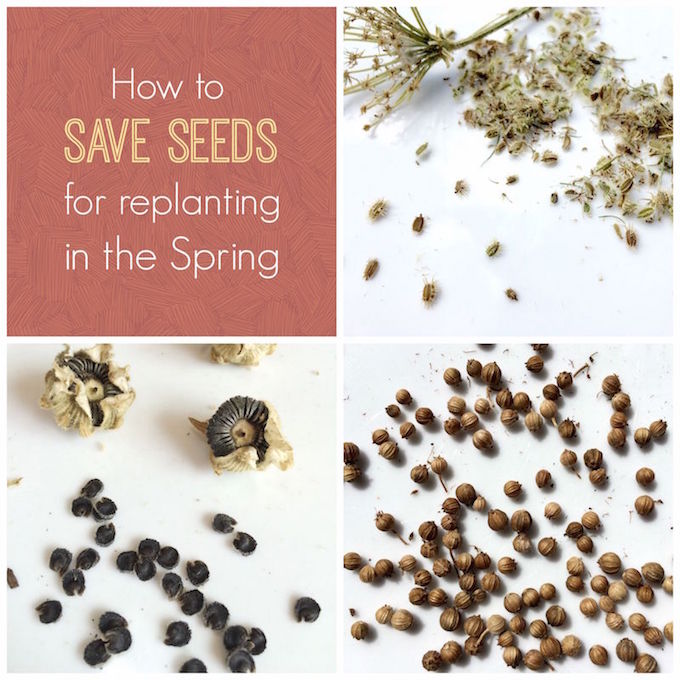
How to Save Seed?
It’s almost Fall which means it is time to start saving seeds for replanting in the Spring!
Fruits and vegetables are known as angiosperm plants( are plants that produce flowers and bear their seeds in fruits), which means their seeds will either come from the flower/pod of the plant (dry) or inside its fruit (If fleshy).
Here is a overview of how to save seeds for the beginner’s perspective:
Dry fruits
Below are the types of plants that fall into this category include:
- cilantro,
- carrots,
- flowers,
- lettuce,
- peas,
- broccoli,
- nuts,
- and types of grains.
Saving seeds from this category is straightforward.
How to go about saving seeds?
Allow the seed, pod, or flower to remain on the plant until it begins to dry and turn brown.
At this stage, cut off the flowering heads or pods and place them upside down in a paper bag. Over a few weeks, most of the seeds will drop to the bottom of the bag.
At this point you can transfer them to an envelope for permanent storage.
Some types of dry fruit plants do not form seed pods or flowers until their second year. These types of plants are known as biennial.
Usually the plant is left in the garden over the winter and in the Spring it will bolt, leaving you with seeds! In some colder harsh environments, the plants must be dug up, stored in a cellar and then replanted in the Spring.
Examples of biennial plants include: root crops, onions, cabbages, parsley and brussels sprouts.
Fleshy Fruits
These types of seeds come from the inside of the fruit or vegetable and are usually surrounded by a fleshy, soft substance that we consume.
Examples include:
- apples,
- oranges,
- tomatoes,
- squash,
- cucumbers,
- melons,
- grapes.
These types of seeds are best when the fruit or vegetable has grown past the point of eating; the bigger the fruit, the bigger the seeds inside will be. You should also be conscious to harvest seeds only from disease-free fruits and vegetables.
It is a little more time-consuming to save these seeds. First scoop out the seeds, place in a bowl of room temperature water, and remove as much of the fleshy part as possible.
TIP: If some seeds float to the top, throw them away, as they are usually non-viable.
Once the seeds are clean and free of debris, spread them onto a ceramic plate to dry in a well-ventilated area that does not go over 96°F. After a few days, the seeds will be dry and ready for storage.
**Tomato seeds are unique in that they require fermentation before storage.
Other tips to keep in mind when saving seeds:
- Storage tips: Store seeds in a dark, cool and dry environment. Most seeds can be saved for at least two years, but some can go up to five years.
- Cross-pollination: Certain plants can cross-pollinate, so you might not get the same exact variety that you had the year before. To avoid cross-pollination, only plant one variety of a certain fruit or vegetable at a time.
- Adaptation: Seeds and the respective plant adapt to your garden over time. By saving your seeds every year, you will soon create your own plant variety that thrives in your backyard.
- Germination Testing: A few weeks before you are ready to re-plant, do a germination test to make sure your seeds are still alive. Place about 10 seeds on a damp paper towel and place in an unclosed zip lock bag. Leave it at room temperature for a few days.
- Count the number of seeds that have sprouted. You can find your germination rate by taking the number of seeds that sprouted divided by the number you started with. Example: if 7 out of 10 germonate, grew, then your germination rate is 70 percent.
The seed saving aspect is a beautiful thing and part of nature cycle of life. To harvest seeds, the plant has to die first or you have to give up some edible fruit. Thereafter, that sacrifice pays off as it will give new life in the form of a seed.
Discover how to start a vegetable garden if you have bought or saved fruit or vegetable seeds.
What I love is that one plant from one tiny seed yields more than you could possibly use the next year. Fruit and vegetables are in some way like reproducing machines!
Share your thoughts and let us know how did you perform in the comments below.
Happy seed saving this winter!
I was so surprised to read about pruning tomatoes ! We planted 19 pots/buckets of tomatoes and they look great, have some small ones on it, but now I know to prune them. Also, thx for instructions on how to harvest tomato seeds. What is meant by fermenting seeds?
Lauri thanks for your much appreciated comment 🙂
We just acquired the site, that is why you didn’t get a reply from us.
I guess Eve was trying to say: you can ferment tomato seeds to get new healthy tomato that are disease (caused by certain fungus free plants ) free next time you plant those little ones. We haven’t got a post on that but you can read further here: https://www.permaculturenews.org/2014/07/08/save-tomato-seeds/
Good luck with your seeding.